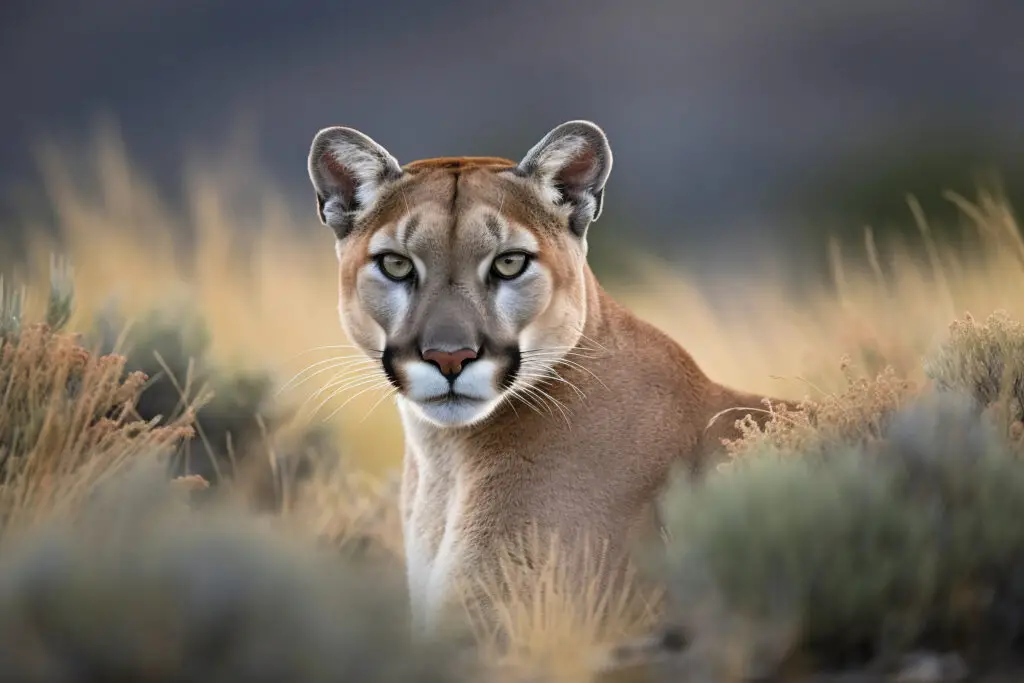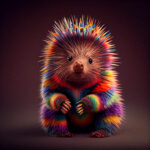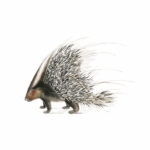
Explore the unexpected adversaries willing to tackle the formidable task of hunting down porcupine predators.
Quick Answer: Mountain lions, leopards, hyenas, great horned owls, harpy eagles, fishers, martens, wolverines, certain snakes, and even domestic dogs are known to be Porcupine predators.
Key Takeaways:
- Porcupines face predation from a variety of animals, including large carnivores like mountain lions and leopards, birds of prey such as great horned owls, and smaller mammals like fishers and martens, all of which have developed strategies to circumvent the porcupine’s quill defenses.
- Porcupines employ both passive and active defense mechanisms, including their sharp, barbed quills, nocturnal habits, and solitary nature, to reduce the risk of predation and enhance their chances of survival in the wild.
- The balance between porcupines and their predators is influenced by regional habitat conditions, with human-induced habitat loss posing a significant threat to this balance, necessitating conservation efforts to protect both porcupines and their natural predators.
Predators of the Porcupine: Who’s on the Hunt?
Porcupines, with their sharp quills, may seem almost untouchable. However, in the wild, a variety of predators have adapted unique strategies to make a meal of these prickly rodents. These interactions showcase the incredible adaptability of predators and highlight an ongoing evolutionary arms race. The survival rates of porcupines can vary greatly depending on the predator they face and the ecosystem they inhabit.
Large Carnivores Known to Prey on Porcupines
In the realm of large carnivores, mountain lions, leopards, and hyenas are known to occasionally prey on porcupines. These powerful animals have developed strategies to circumvent the porcupine’s defenses, such as attacking the unprotected face or belly. In North America, mountain lions will flip porcupines onto their backs to avoid the quills. Similarly, in Africa, leopards and hyenas use their strength and agility to target vulnerable areas. These predation attempts are not without risk, and injuries from quills can be severe. The impact of these large predators on porcupine populations is significant, and understanding these dynamics is crucial for conservation efforts.
Birds of Prey: Raptors That Can Take Down a Porcupine
The skies also hold formidable porcupine predators. Raptors such as the great horned owl and the harpy eagle have the strength and precision to take down these spiky creatures. These birds of prey utilize their powerful talons to strike vital areas, avoiding the quills as much as possible. The physical adaptations of these raptors, including their sharp beaks and strong grip, are essential for handling such a challenging prey. While attacks by raptors are not everyday occurrences, they play a role in the ecological significance of natural selection, influencing the traits of both predator and prey.
Small and Medium-Sized Mammals as Porcupine Predators
Among smaller predators, fishers, martens, and wolverines have all been observed hunting porcupines. These mammals are adept at flipping porcupines to expose their vulnerable underbellies. The habitat overlap between these predators and porcupines can lead to more frequent encounters, influencing predation rates. The balance between the porcupine’s defenses and the predator’s hunting skills is a fine one, with each side constantly adapting to the other’s tactics.
Surprising Predators: When Unlikely Animals Attack
Occasionally, porcupines face threats from unexpected sources. Certain snake species and even domestic dogs have been known to attack porcupines. These unusual predators might be driven by hunger or curiosity, often resulting in painful consequences due to the porcupine’s quills. Such encounters offer a glimpse into the complexities of animal behavior and the interconnectedness of the food web. These rare predation attempts serve as reminders of the unpredictability of nature and the varied challenges porcupines face in their struggle for survival.
Understanding Porcupine Defense Mechanisms Against Predators
Porcupines are like the tanks of the rodent world, armored with quills that deter most would-be attackers. These quills are not just hair with attitude; they’re a sophisticated defense system. Each quill is a sharp spike that can easily get stuck in the skin of any animal that gets too close. Contrary to popular belief, porcupines can’t shoot their quills, but the quills can detach when touched.
These creatures are mostly nocturnal, which means they’re active at night. This habit helps them avoid many predators that hunt during the day. Porcupines also have a special way of living called denning behavior. They find a cozy spot, like a cave or a hollow log, and make it their home. This not only keeps them warm but also safe from predators.
The Role of Quills in Deterring Attacks
Let’s dive deeper into the porcupine’s quill story. Quills are essentially modified hairs coated with thick plates of keratin. They are sharp, rigid, and have barbed tips that make them stick into and stay in an attacker. If a predator gets a mouthful of these, it’s going to regret it. The quills can lead to serious injuries and sometimes even death if they hit vital areas or become infected.
- Quills are coated with keratin, making them tough and sharp.
- Barbed tips ensure that quills stay embedded in predators, causing injury.
The evolutionary development of quills is a fascinating tale of survival. Over time, porcupines have evolved this unique feature to protect themselves from predators, shaping the dynamics of the ecosystems they inhabit.
Behavioral Strategies for Avoiding Predation
Porcupines don’t just rely on their quills; they’ve got brains too. They are solitary animals, which means they don’t hang out in groups where they might attract more attention. Their nocturnal activity is another smart move, keeping them out of sight from many predators. When they’re not wandering around at night, they’re often found in trees or rocky areas where they’re harder to reach.
- Solitary nature helps porcupines stay under the radar.
- Nocturnal activity reduces encounters with many predators.
Porcupines also use their intelligence to avoid danger. They learn from experiences and can remember places where they’ve encountered predators before. Maternal teaching is crucial too, as baby porcupines learn survival tactics from their mothers. This includes where to find food, how to climb trees, and how to use their quills when threatened.
In the wild, the porcupine’s life is a delicate balance between being visible enough to find food and mates, but not so visible that they become an easy meal. Their quills and behaviors have evolved to tilt this balance in their favor, making them one of the most uniquely defended creatures in the animal kingdom.
The Impact of Habitat and Region on Porcupine Predation
The risk of predation for porcupines varies widely depending on their habitat and the region they call home. In the dense forests of North America, porcupines must be wary of agile fishers and stealthy mountain lions, while in the open savannas of Africa, they face threats from powerful lions and opportunistic hyenas. Habitat loss and fragmentation due to human activities can disrupt these dynamics, often leading to more frequent and dangerous encounters between porcupines and their natural enemies.
North American Predators of Porcupines
In the varied landscapes of North America, porcupines encounter a specific set of predators. Fishers are among the few animals that have mastered the art of preying on porcupines, using a technique to flip their prey and attack the unprotected belly. Mountain lions, with their incredible power, occasionally take down porcupines when other prey is scarce. Even great horned owls have been known to snatch juvenile porcupines from the trees.
- Fishers target the belly of porcupines, avoiding the quills.
- Mountain lions use their strength to overcome porcupines’ defenses.
- Great horned owls may prey on younger, less protected porcupines.
The climate and habitat type play significant roles in these interactions. For example, in colder regions, porcupines may be more vulnerable during winter when other food sources are limited. Conservation efforts are crucial in these areas to maintain the balance between predators and prey and to ensure the health of the ecosystem.
Predators of Porcupines in Other Parts of the World
Moving beyond North America, porcupines face different predators in Africa and Asia. African porcupines, which are larger and more terrestrial, have to contend with lions that have the strength to overpower them. In Asia, porcupines must be alert for leopards and large birds of prey. Each region presents unique challenges for porcupines, shaped by the local predators and the environment they share.
- In Africa, lions are a significant threat to porcupines.
- Asia sees leopards and large raptors preying on porcupines.
The ecological importance of these predator-prey relationships cannot be overstated. They help control porcupine populations and maintain the health of the environment. However, conservation issues arise when habitats are destroyed or altered, which can lead to increased conflicts and threaten the survival of both porcupines and their predators. Protecting these habitats is essential for preserving the natural order and the biodiversity within these regions.
Human and Porcupine Interactions: Mitigating Risks
When humans and porcupines cross paths, it’s essential to handle the situation with care to minimize risks for all involved. Whether you own a porcupine, have stumbled upon one, or are dealing with them on your property, understanding porcupine behavior is key to avoiding negative interactions. Securing your property to prevent accidental encounters, knowing what to do if your pet meets a porcupine, and being aware of the legal and ethical considerations of wildlife conflicts are all crucial steps.
Protecting Porcupines from Domestic and Wild Animals
Creating a safe environment for porcupines means being mindful of both domestic pets and wild animals that might enter areas inhabited by humans. Here are some tips to keep in mind:
- Ensure your pets are supervised when outside, especially at dawn and dusk when porcupines are more active.
- Educate your community on the importance of wildlife coexistence and share tips on how to avoid conflicts.
- Build fences or use deterrents to keep wild animals away from areas where porcupines may be present.
Responsible pet ownership includes training and controlling your pets to prevent them from attacking wildlife. It’s not only safer for the porcupine but also for your pet, as porcupine quills can cause serious injuries.
What to Do If You Encounter a Porcupine in the Wild
If you’re lucky enough to spot a porcupine in the wild, there are ways to appreciate this unique animal without causing it stress:
- Keep a respectful distance to avoid making the porcupine feel threatened.
- If you wish to take photos, use a zoom lens and remain quiet and still.
- Should the porcupine display defensive behavior, slowly back away and give it space.
In the event you find an injured porcupine, do not attempt to handle it yourself. Contact local wildlife rehabilitation centers for assistance. They have the expertise to care for and rehabilitate injured wildlife properly.
By following these guidelines, you can ensure safe and respectful interactions between humans, porcupines, and other animals, fostering a harmonious coexistence with the natural world.
Supporting Porcupine Populations: Conservation and Safety
Porcupines play a unique role in our ecosystems, and their conservation is vital for maintaining ecological balance. The presence of predators is a natural and essential element in controlling porcupine numbers and preventing issues like overgrazing. However, human activities can disrupt these natural processes, leading to habitat loss and a decline in both predator and porcupine populations. By focusing on habitat conservation, promoting responsible wildlife tourism, and supporting conservation programs, individuals can contribute to the well-being of porcupines and the health of our natural world.
The Role of Predators in Porcupine Conservation
Predators are crucial in keeping porcupine populations in check, a process that supports the overall health of ecosystems. This balance is part of what ecologists call trophic cascades, where changes at the top of the food chain can ripple down to affect the entire ecosystem. Protecting predator species is, therefore, an integral part of porcupine conservation efforts. However, these initiatives often face challenges such as habitat encroachment and conflicts with human interests.
- Trophic cascades show the importance of top predators in ecosystem health.
- Protecting predators helps control porcupine numbers and prevent overgrazing.
- Conservation challenges include balancing human activities with the needs of wildlife.
How to Create a Safe Habitat for Porcupines
Creating a safe habitat for porcupines involves understanding their needs and the environments they thrive in. Here are some ways to enhance these areas:
- Preserve natural areas where porcupines live, such as forests and rocky outcrops.
- Implement land management practices that promote a diverse and healthy ecosystem.
- Engage in public education to raise awareness about porcupine conservation.
Community involvement is also key to successful habitat preservation. By working together, communities can develop strategies to protect these unique animals and the places they call home. Whether it’s through local conservation projects or broader initiatives, every effort counts towards ensuring a safe future for porcupines and the complex ecosystems they inhabit.
Frequently Asked Questions
Question 1:
Can porcupines survive encounters with predators, or do they often get killed? Answer: Porcupines can survive predator encounters due to their quills and behaviors, but they may also be killed, especially if the predator is experienced or determined.
Question 2:
Are there any specific techniques predators use to avoid getting quilled? Answer: Some predators flip porcupines to expose their quill-less underbellies, while others may target the face or belly directly.
Question 3:
Do porcupines have any natural defenses other than their quills? Answer: Yes, porcupines are nocturnal and often den in safe places like caves or hollow logs to avoid predators.
Question 4:
How do porcupine populations affect their ecosystems? Answer: Porcupine populations can influence vegetation and serve as prey, affecting the balance of their ecosystems.
Question 5:
What role do humans play in the predation of porcupines? Answer: Humans can impact porcupine predation through habitat alteration and by managing interactions with domestic animals.
Read more facts about Porcupines here.
Further reading here.





